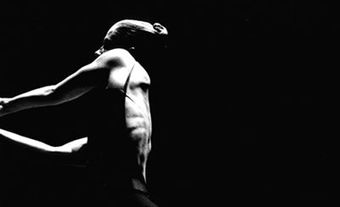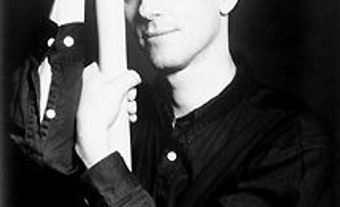Roy Arden, photographer, artist (born 1957 in Vancouver, BC). Best known for his photographs of the desolate, debris strewn, and decaying environs in and around Vancouver, which have been associated with Vancouver school artists like Jeff Wall and Stan Douglas, Roy Arden has also worked in collage, sculpture, and video. He received a major mid-career survey at the Vancouver Art Gallery and is in the permanent collections of major international museums such as the Museum of Modern Art, New York, the Los Angeles County Museum of Art, and the Stedeljik Museum in Amsterdam.
Education and Early Career
Roy Arden attended the Emily Carr Institute of Art and Design (now the Emily Carr University of Art and Design), receiving a diploma in 1982, and went on to complete an MFA at the University of British Columbia in 1990.
Many of Arden’s earliest works from the middle of the 1980s, some of which appeared in his first solo exhibitions at artist run centres like Western Front in Vancouver in 1986 and YYZ Artist’s Outlet in Toronto in 1987, consist of found, black and white archival photographs of urban scenes in Vancouver. Mission (1986), for instance, is an image divided up into long vertical strips in two sequences of three, of an outdoor public staging of the crucifixion, helmeted Roman guards and the Virgin Mary and all. The event was presumably part of a Good Friday celebration, the audience, decked out in coats and sweaters against the damp Vancouver chill, in the foreground. Polis (1986), on the other hand, pairs five images of the construction of a monumental public building in Vancouver with ground-level images of a debris-strewn street. The term “polis” comes from the ancient Greek and refers to the city state, a collection of citizens who participate in the political process; Arden’s piece suggests the disjunction in Vancouver between the political order and the lives of its lowliest citizens.
Colour Photography
In the 1990s, Roy Arden began taking large format colour photographs of the architecture and urban and industrial detritus in and around Vancouver, his underlying theme being both the rapid transformation of the city and its impact. Landfill, Richmond BC (1991), for instance, is shot from a road toward a heap of earth with a tilted measuring rod beside a dirt service road, a leafless tree behind it. Construction Site and Suntower (1992) is shot from a slight elevation across from an area excavated and cleared for what one imagines will be the construction of a high rise, a lone pile of dirt in the foreground; behind is an isolated stand of old apartment buildings and Vancouver’s famous Beaux Arts Sun Tower, its steel dome painted to make it look like copper. Railway Yard, Vancouver BC (1996) has a mass of soggy debris in the foreground, the bright red, orange, blue and green box cars mirrored in water past a chain link fence. And House on Alley 6th Avenue is a photograph shot from behind, which depicts a small, old, dilapidated wooden house with a battered blue fence, similar houses surround it; a line of mountains against a cloudy sky is visible beyond the peak of the house’s roof. House on Alley 6th Avenue is not so much about poverty (there is a nice looking car in the small driveway) as about the way an older, more intimate version of Vancouver is literally crumbling.
Sculpture, Video, and Collage
Roy Arden’s reputation as an artist largely rests on his photographs of the urban and industrial environment in and around Vancouver; these photographs are carefully composed in a way that allows them to straddle the line between documentation and works of art. Moving into the 21st century, Arden has also explored other genres and idioms while retaining his interest in the detritus of urban life and history. The sculpture Corona (2010), for instance, consists of bent, rusted, spoked wheel rims and strings of bottle caps suspended from the ceiling and spilling off onto the floor. The video Juggernaut (2000) is a side view of an old car engine that vibrates as it revs up, and the video Citizen (2000) is a low view of a street with congested traffic streaming by in both directions, a homeless man with his possessions heaped beside him sitting in the concrete island in the middle. The digital collage The Terrible One (2007) primarily consists of close up images of machinery that look like the torn apart insides of an animal. Other collages are created out of torn images and texts from magazines, which are then painted or drawn over.
Teaching and Exhibitions
Over the course of his career, Roy Arden has served as a sessional instructor in the photography studio department at the Emily Carr University of Art and Design and the University of British Columbia. He has also served as a guest teacher at art academies in Finland, Germany, and Switzerland. Arden has had over 50 solo exhibitions in Vancouver, Toronto, Montréal, Los Angeles, New York, and across Europe, including a 2007 mid-career survey at the Vancouver Art Gallery.

 Share on Facebook
Share on Facebook Share on X
Share on X Share by Email
Share by Email Share on Google Classroom
Share on Google Classroom


